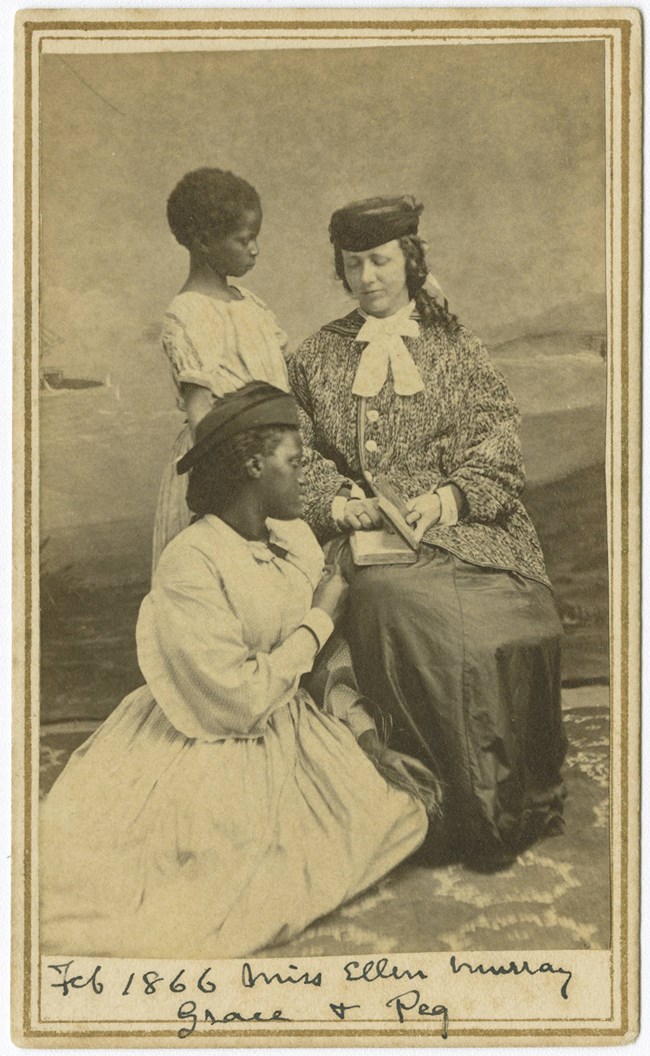Part of a series of articles titled Poems by Ellen Murray.
Article
Introduction to Poems by Ellen Murray

Penn Center Collection
Originally from Canada, Ellen Murray arrived in Beaufort County, South Carolina in May of 1862 to participate in the Port Royal Experiment alongside her lifelong partner, Laura Towne. In June of 1862 Ellen taught the first classes of what became known as the Penn School on St. Helena Island. That fall, Towne and Murray were joined by Charlotte Forten.
Much of what we know about the early history of Penn School comes from the writings of Charlotte Forten and Laura Towne. During the war, Forten published articles in The Atlantic, and Towne wrote reports on the school’s operation for the Freedman’s Bureau shortly after the war. In the 20th Century, both Towne’s and Forten’s journals were published, giving us a robust view of life around Penn School during the Civil War. However, to date, very few of Ellen Murray’s writings have been identified or published. Perhaps she kept a diary and wanted to keep it private, or maybe her writings just didn’t survive long enough to be published.
However, not all of Ellen Murray’s writings remained private. Between 1861 and 1865, she wrote more than a dozen poems that she had published in the National Anti-Slavery Standard, a prominent abolitionist newspaper. Her poems cover a wide range of topics, from memorializing the abolitionists John Brown and Colonel Robert Gould Shaw of the 54th Massachusetts, to bidding farewell to the residents of Edisto Island who had refugeed on St. Helena Island during the Civil War. Her poems offer a glimpse in the world and perspective of one of Penn School’s founders and longtime residents of St. Helena Island.
Last updated: March 14, 2024
